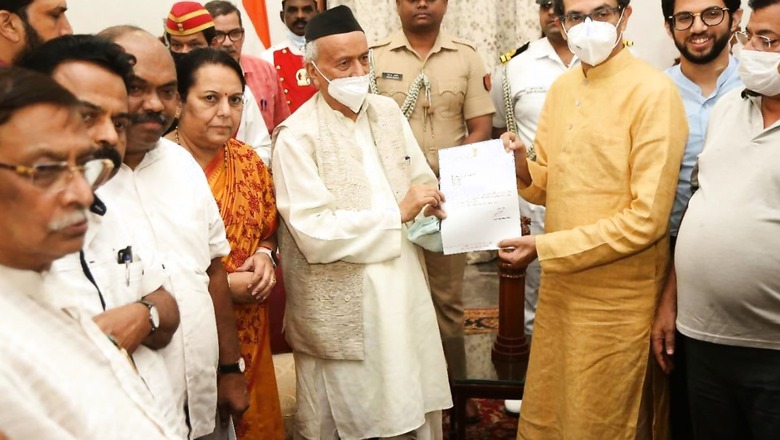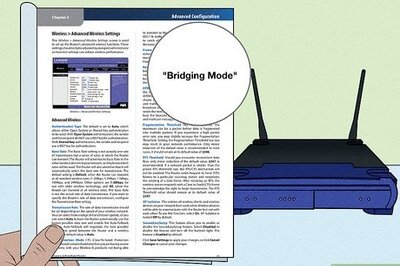
views
On June 19, 1966, when Balasaheb Thackeray laid the foundation for the Shiv Sena by breaking a coconut at Mumbai’s famous Shivaji Park, little did he realise that just like the coconut, the cracks in his party were to split wide open, 56 years later.
With 55 seats in the present assembly, the Shiv Sena has come a long way and grown from strength to strength despite its “betrayals”, which the Thackerays claim they will never forget.
Once, as a response to a question on why he did not leave the Shiv Sena, former Maharashtra chief minister and Lok Sabha Speaker Manohar Joshi said: “The Shiv Sena is like a lion’s den; you can go in but can’t come out.”
Now, caretaker Maharashtra Chief Minister Uddhav Thackeray’s emotional speech announcing his resignation and calling the revolt within the party as “betrayal by one’s own” also makes one reflect on the three other times such a betrayal took place under Balasaheb’s watch.
Eknath Shinde and the 51 MLAs who have pledged their support to him have come as the biggest jolt for the Shiv Sena since the 1991 turmoil.
On a rather cool, sultry December evening in Mumbai, Chhagan Bhujbal — who was considered close to Balasaheb Thackeray — was extremely upset. Senior Thackeray had given Manohar Joshi the post of the Opposition leader and his growing stature in the party began to eclipse Bhujbal.
The leader claimed that “he was not being appreciated” within the party and was hurt by the way he was treated. Bhujbal threatened to split the Shiv Sena by taking 18 of 52 MLAs with him and forming a new party called Shiv Sena (B). Incidentally, this is the same name that Shinde’s team has considered for their new outfit.
Bhujbal sent in a letter along with the names of the 18 MLAs to then Speaker Madhukar Rao Choudhry and soon after, Thackeray unceremoniously sacked Bhujbal. However, 12 of the ‘rebel’ MLAs returned to the Sena fold the very same day. Bhujbal joined the Congress and later joined hands with NCP patriarch Sharad Pawar when he founded his own party.
This was the first ‘betrayal’ to the Shiv Sena, one that was considered a major jolt to the party.
The second came 15 years later when another Shiv Sena leader, Narayan Rane, wanted to split the party by taking away 40 of 62 MLAs. The friction here was the growing importance of Uddhav Thackeray in the party as both Rane and Uddhav Thackeray were unable to see eye to eye. Rane also found Uddhav’s meteoric rise within the party as losing his importance.
Rane was a popular leader and his allegiance to the party was unquestionable until the split. Rane later joined the Congress and became a minister in the NCP-Congress alliance government. After having left the Congress, he is presently a Rajya Sabha MP from the BJP.
The third and most “intimate” betrayal came from Raj Thackeray, Uddhav’s cousin and one that a senior Shiv Sena leader called “the betrayal of one’s own”. Known to have been the face of Shiv Sena while at its peak and Bal Thackeray’s heir apparent, Raj Thackeray split away from the party in 2005 to float his own called the Maharashtra Navnirman Sena (MNS). Raj claimed that his fight was not with the Sena leadership but with those who have been trying to keep him and his supporters out.
The fourth major betrayal came from Eknath Shinde who also alleged what Raj Thackeray pointed to — being sidelined by the “cronies of Thackeray”. Even as Uddhav Thackeray cried foul and challenged the rebel camp to try and wean away the Shiv Sainiks (or the party workers) from the party that stands for their ideals and dreams set by his father Balasaheb Thackeray, his appeals seem to have fallen on deaf ears.
Read all the Latest News , Breaking News , watch Top Videos and Live TV here.




















Comments
0 comment